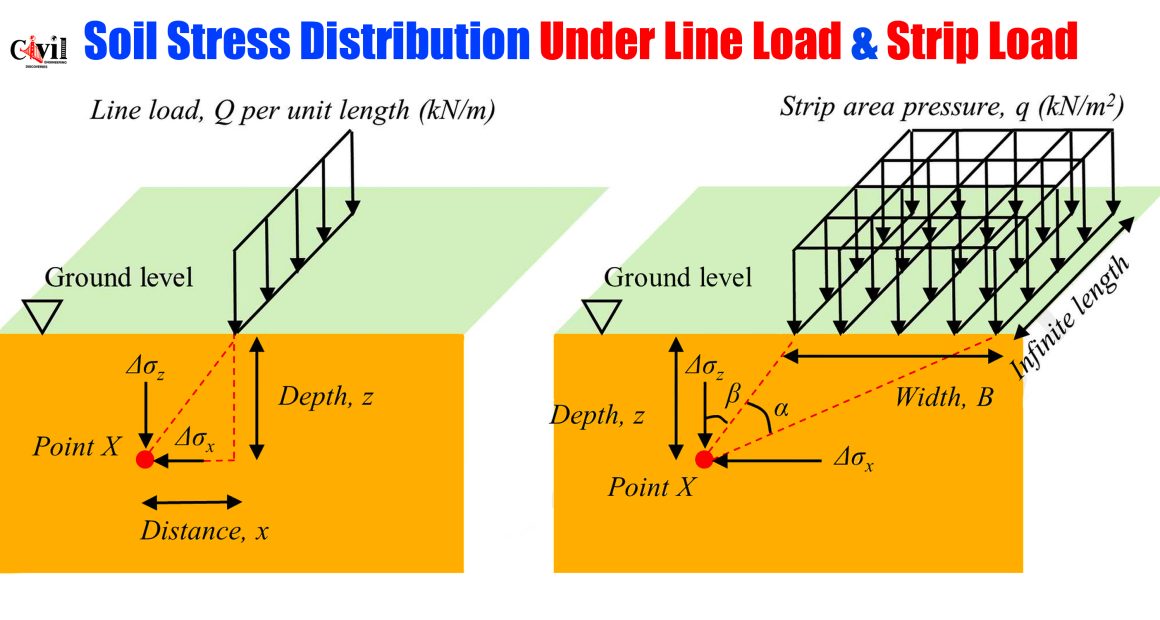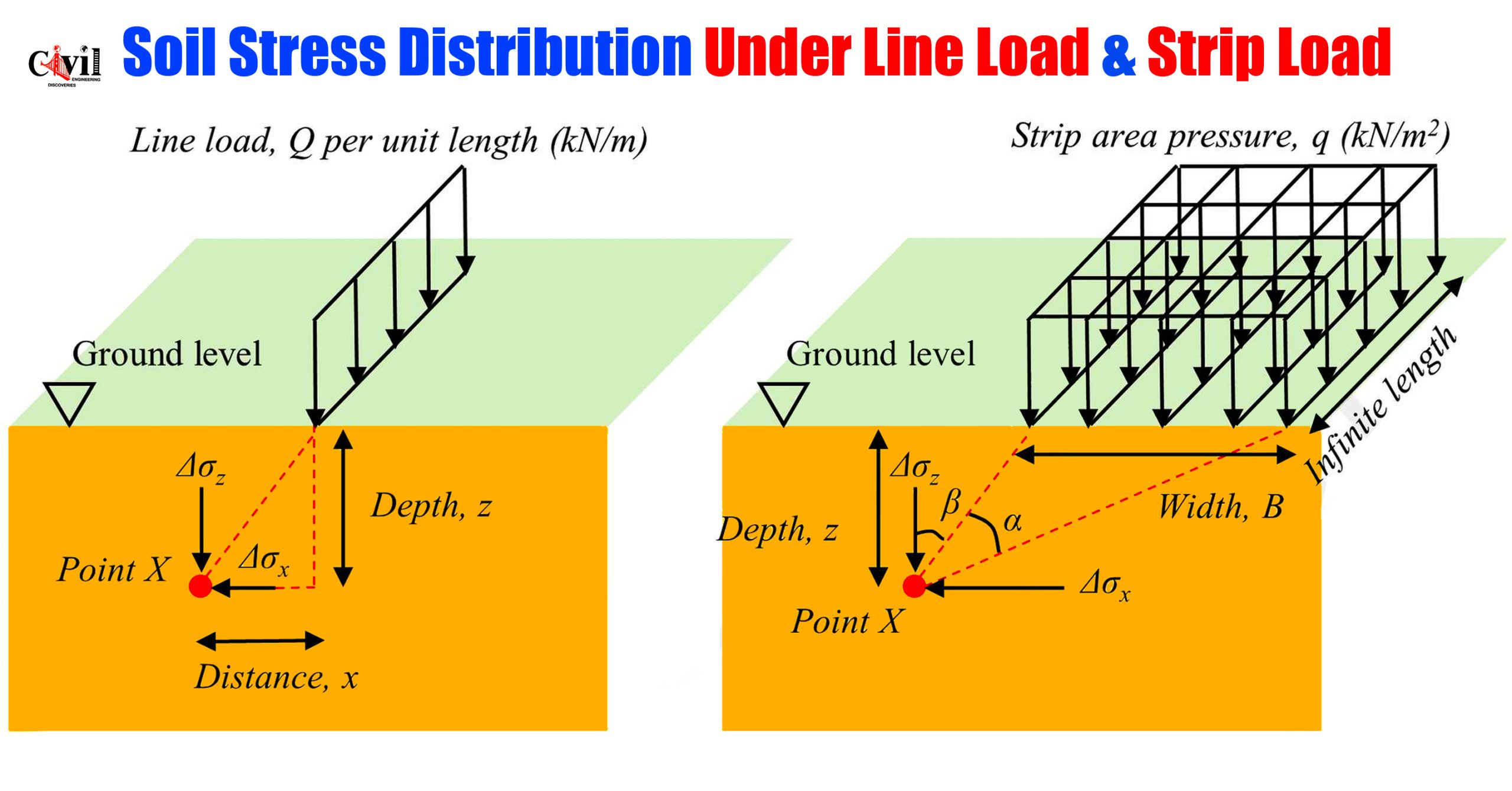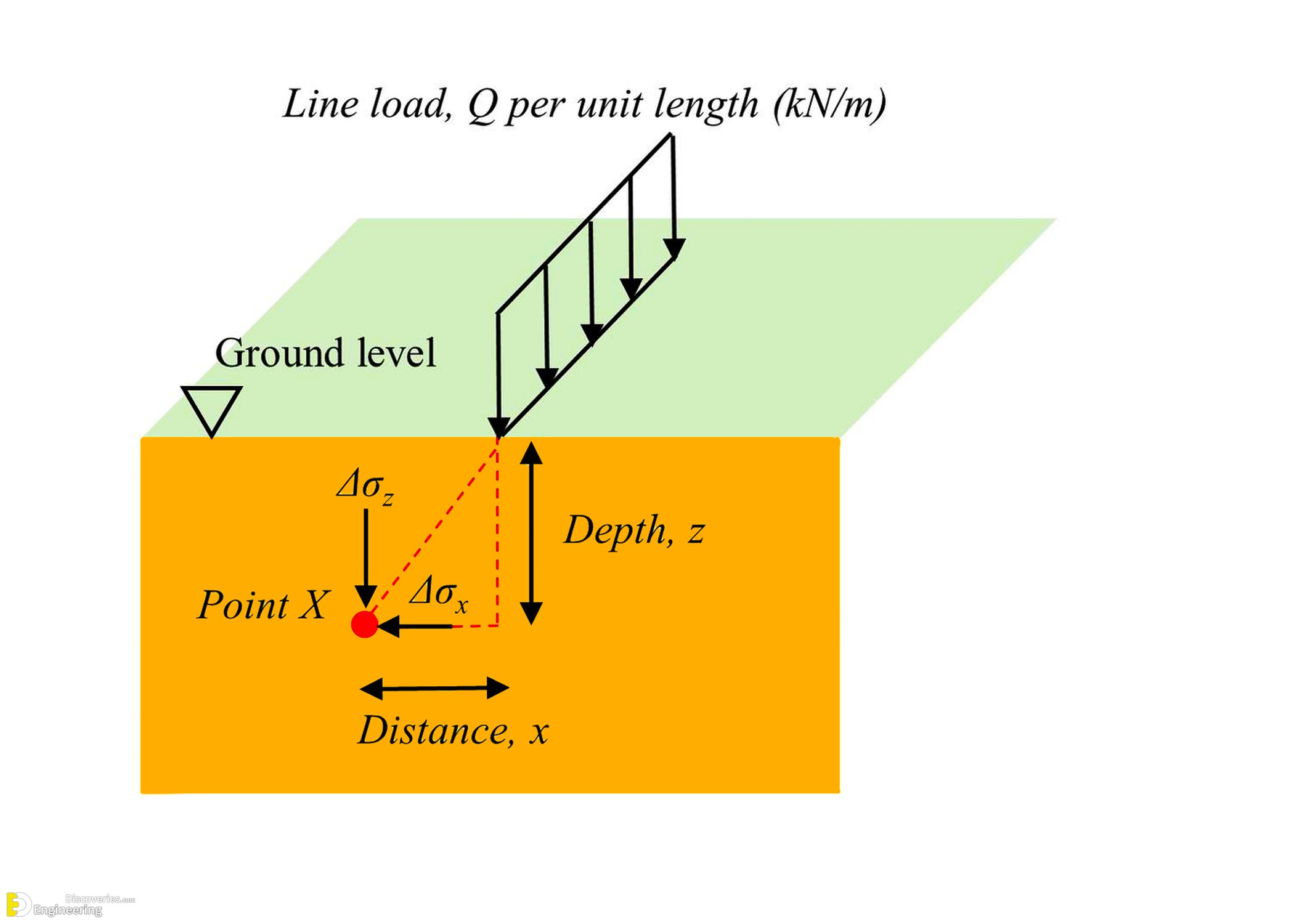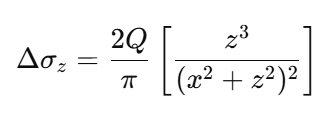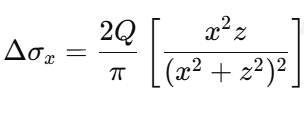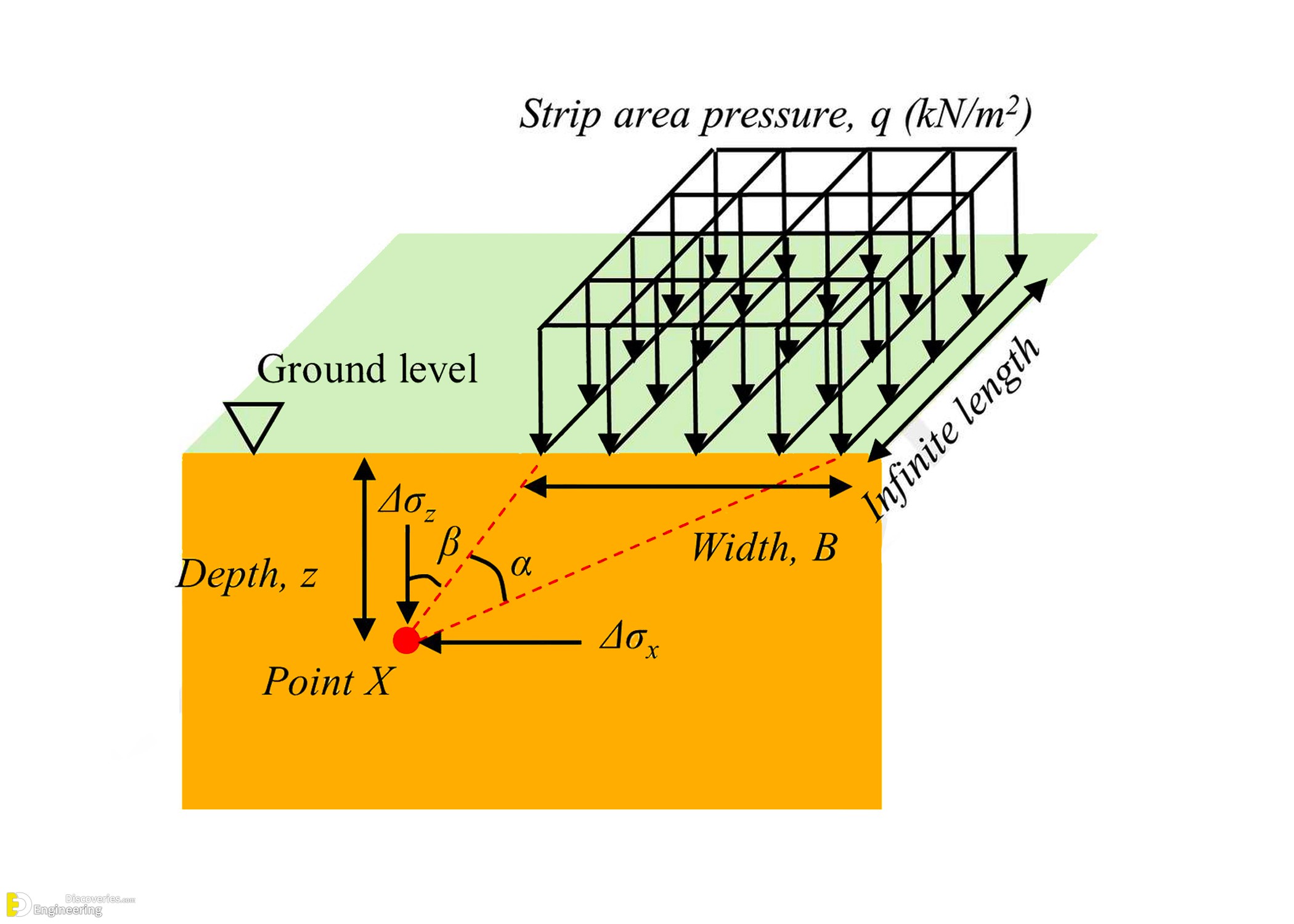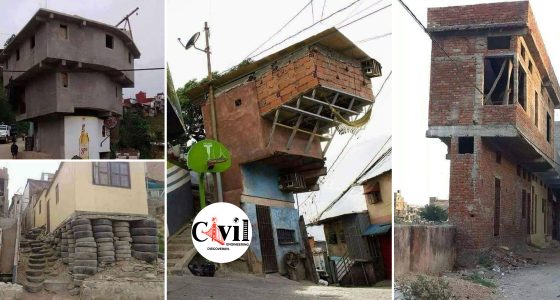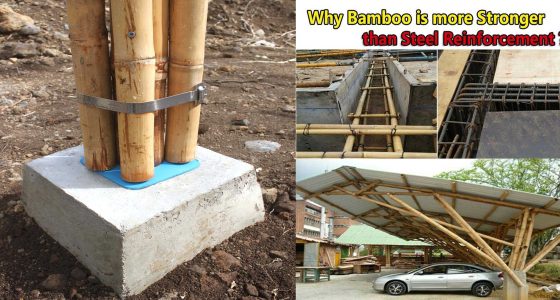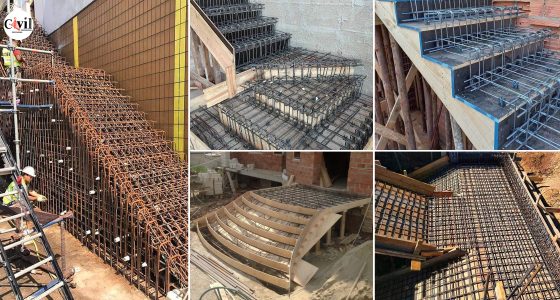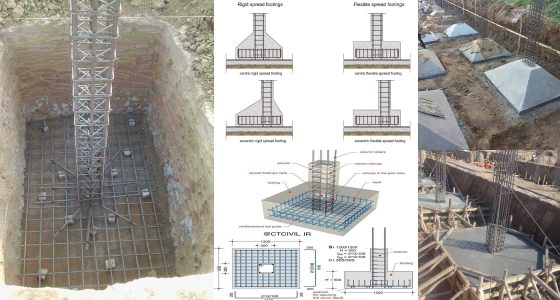Understanding Soil Stress Due to Line Load
When a concentrated line load Q (kN/m) is applied at the ground surface, it causes stress within the soil. This stress varies with both the horizontal distance x and depth z from the point of application.
The point beneath the surface where stress is calculated is referred to as Point X. This point’s vertical stress component, horizontal stress component, and shear stress are defined by the following equations:
Vertical Stress (Δσz):
Horizontal Stress (Δσx):
Shear Stress (Δτxz):
These expressions allow accurate calculation of how soil reacts directly under and around the line load.
Stress Beneath Strip Area Pressure: What Happens Below the Surface
For strip foundations or pressure distributions applied uniformly over a width and extending infinitely in one direction, the stress below the soil surface depends on angles α and β. These angles are based on the geometry between Point X and the edges of the loaded strip.
With a pressure intensity q (kN/m²), the stress components are calculated using:
Vertical Stress (Δσz):
Horizontal Stress (Δσx):
Shear Stress (Δτxz):
These equations offer engineers the tools to estimate stress changes in the soil beneath a uniformly loaded strip.
Key Factors That Influence Soil Stress
Depth of Point X
The deeper the point of interest (z), the lower the resulting stress. Stress rapidly decreases with depth.
Horizontal Distance (x)
As the distance from the line or strip load increases horizontally, the influence of the load reduces significantly.
Load Type and Distribution
A concentrated line load causes localized stress. On the other hand, a strip load spreads the pressure over a wider area.
Load Magnitude
Higher values of Q or q lead to higher stress values beneath the surface. Always ensure precise measurements for input values.
Applications in Geotechnical Engineering
Designing foundations
Estimating settlement
Assessing soil bearing capacity
Evaluating slope stability
Understanding how stress spreads within the soil is vital for the safety of any structure. These equations help engineers predict soil behavior under different loading scenarios.
Final Thoughts
Accurate calculation of subsurface stress is critical. Whether it’s a line load or a uniformly distributed strip load, using the right stress equations ensures better design decisions.
Always consider depth, distance, and load configuration when analyzing soil stress. Proper application of these formulas helps prevent structural failures and supports efficient foundation engineering.
Click Here To See Complete Guide To Mechanics Of Materials: Formulas, Concepts, And Applications
